Nicholas’ Story
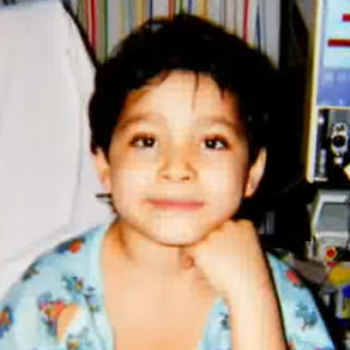
Nicholas H. and his mother, Bridget, talk about life with sickle cell disease. Nicholas was diagnosed with sickle cell disease soon after he was born. Penicillin, hydroxyurea and other medicines have helped him and his family manage the illness and the severe pain crises that can result in hospitalization.
Damala and Amiel Reid’s Story
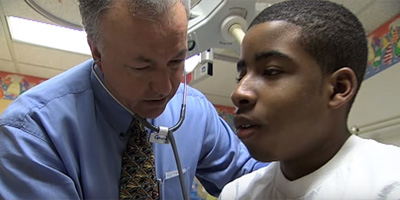
Damala & Amiel are siblings are both living with sickle cell disease. While both of the siblings are interested in alleviating human suffering, Damala is more focused on the human aspects while Amiel is focused on the more scientific aspects.
Tiffany’s Story: Living with and Managing Sickle Cell Disease

This video shows how Tiffany, a mother and student, has coped with having sickle cell disease. Tiffany is living with the most severe form of sickle cell disease, sickle cell anemia. After giving birth to her daughter, Tiffany became very sick and was admitted to the hospital many times. In 2009, she began treatment with a medicine called hydroxyurea. Although Tiffany’s brother had taken hydroxyurea and had many side effects, Tiffany’s experience with it has been more successful. Learn more about how she is managing sickle cell anemia and living a healthy lifestyle story by watching this video.
A Letter from Maria Teresa Olivares
Hello there! My name is Maria Teresa Olivares, and I am 40 years old. Now…I has been suffering from Sickle Cell Disease my whole life, I am from Managua, Nicaragua, being a poor country I was diagnosed as a leukemia patient, suffering from hepatitis, kidney infections, liver problems since early age (5), until the age of 22 I was treated like a leukemia patient, I got married, lost my first child, (miscarriage), during my second pregnancy, I had a serious sickle cell crises, the child, my only daughter now 16, was born just fine, it wasn’t until coming to this country, and after a car accident, that the doctors finally said: You have Sickle Cell Disease…
Autobiography of Ingrid Whittaker-Ware, ESQ
I was born in 1962 to Raphael and Muriel Whittaker. The fourth of five children born to my parents, I was raised in the sunny island of Jamaica, and migrated to Atlanta, Georgia in 1980. I was the first girl born to my parents after three boys, so my mother gave me all the names she had been saving up for a daughter. I was diagnosed with sickle cell disease (SS) at eleven months old…
Letter from a 70 Year Old Woman with Sickle Cell Disease
To whomever will listen, I am a 70 year old woman with SC Disease. I had crises regularly as a child. After age 37 and at the onset of a doctor prescribing 10 grains of sodium bicarb daily my crises became few and far between…
A Story from Nigeria
My name is Julia Aruya, I am now 37 years old. I was born in Lagos, Nigeria. Out of 4 children, I was the only one with Sickle Cell Disease…
Dispelling the Myth: The Important Truth about Sickle Cell Disease and the West Indian Culture
By Melissa Creary
I was three years old when I was diagnosed. My parents did not know what was wrong, when after a day at the pool, I became very ill and nothing seemed to pacify me. I went through test after test. At one point, the doctors even thought I had leukemia. It was not until my aunt, a nurse, asked my mother if I had ever been tested for sickle cell anemia, that my family finally had an answer…
Letters from Caucasian Families with Sickle Beta Thalassemia
Sickle Cell Disease can affect ANY race! My name is Vikki and my husband and I am a Caucasian couple with 2 beautiful boys that have from Sickle Beta Thalassemia Plus. I am of Italian decent and have a thalassemia trait. When I was pregnant I was tested and my doctor wanted to test my husband for it as well. I received a call several days later that he has a sickle trait…
Newborn Screening FAQ
By JoAnn Beasley, RN, BS
State of Georgia Sickle Cell Newborn Coordinator, Clinical Manager of Georgia Comprehensive Newborn Screening Program
Sickle Cell Disease Information for Parents
Usually, red blood cells (RBCs) are shaped like round discs. People who have sickle cell disease, though, have RBCs that are shaped like sickles, or crescent moons. This defect can cause painful episodes, serious infections, chronic anemia, and damage to body organs.
Read more at KidsHealth
What Is Sickle Cell Disease? Information for Teens
Sickle cell disease is a blood disorder that’s inherited — meaning it’s passed down from parents to their children. Babies are born with sickle cell disease when they inherit two abnormal genes (one from each parent). These genes cause the body’s red blood cells to change shape.
Read more at KidsHealth
Robbie the Red Blood Cell – A Buyable Coloring Book for Children
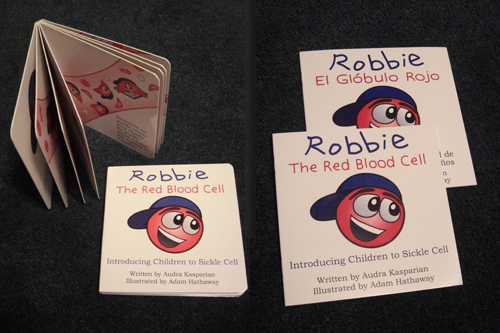
Purchase online here
Do You Know About Sickle Cell Anemia? Information for Kids
Have you ever seen a sickle? It’s a farm tool with a curved, sharp edge for cutting wheat. Sickle cell anemia (say: uh-NEE-mee-uh) is a disease of the blood. It gets its name because a person’s red blood cells are shaped like sickles, or crescent moons, instead of their usual round, disc shape.
Read more at KidsHealth
The National Newborn Screening & Global Resource Center
The National Newborn Screening and Global Resource Center (NNSGRC) serves as an independent U.S. national resource center for newborn screening and provides newborn screening information globally. It serves as the only non-federally funded comprehensive source of newborn screening information.
Sickle Cell Anemia Information Portal from the Mayo Clinic
Sickle cell anemia is an inherited form of anemia — a condition in which there aren’t enough healthy red blood cells to carry adequate oxygen throughout your body.
Normally, your red blood cells are flexible and round, moving easily through your blood vessels. In sickle cell anemia, the red blood cells become rigid and sticky and are shaped like sickles or crescent moons. These irregularly shaped cells can get stuck in small blood vessels, which can slow or block blood flow and oxygen to parts of the body.
Read more at the Mayo Clinic
Sickle Cell Anemia Information Portal on MedlinePlus
Sickle cell anemia is a disease in which your body produces abnormally shaped red blood cells. The cells are shaped like a crescent or sickle. They don’t last as long as normal, round red blood cells. This leads to anemia. The sickle cells also get stuck in blood vessels, blocking blood flow. This can cause pain and organ damage.
Read more at MedlinePlus
Blood Facts
Explore a list of facts about blood at bloodbook.com.
Treatment and Prevention
A thankful teenager, Keon Penn of Atlanta celebrates his 14th birthday after being declared “cured” from sickle cell disease. Two years ago Keon underwent the world’s first unrelated stem-cell transplant at Egelston Children’s Hospital in Atlanta on December 11, 1998. Read more…
History of the Research Effort and Historical References
A summary of progress at the Georgia Comprehensive Sickle Cell Center at Grady Health System, Atlanta, Georgia, along with a list of references.
Sickle Cell Anaemia and Malaria
Luzzatto, L (2012). Mediterr J Hematol Infect Dis. 2012; 4(1): e2012065. Read more on PubMed
How Sickle Cell Protects Against Malaria
A new article is likely to help solve one of the long-standing mysteries of biomedicine. In a study that challenges currently held views, researchers unravel the molecular mechanism whereby sickle cell hemoglobin confers a survival advantage against malaria, the disease caused by Plasmodium infection. These findings open the way to new therapeutic interventions against malaria, a disease that continues to inflict tremendous medical, social and economic burdens to a large proportion of the human population.
Read more at Science Daily
Sickle Cell Information for Teachers, Students, and Employers
Sickle Cell Disease is an inherited chronic illness which results in anemia (low blood counts) episodes of pain and increased susceptibility to infections. Any complication, if severe or untreated can be life threatening. Immediate treatment at a hospital or sickle cell center is required under these circumstances. Classroom and workplace guides Sickle cell patients may […]
About the Americans with Disabilities Act
Too often in the past, people with sickle cell disease were denied jobs or fair treatment at work solely because they had sickle cell disease. Now, the Americans With Disabilities Act of 1990 puts the strong arm of the law on the side of fairness. It protects many people with sickle cell disease from job […]
Amazing Medical Art by Jacob Escott
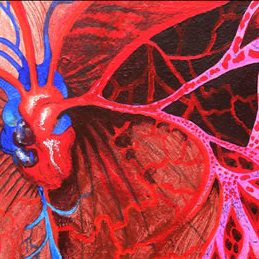
Jacob Escott is London-based Art Director, Digital Designer & Illustrator. He graduated from De Montfort University where he studied Graphic Design & Illustration as well as Art & Design Foundation. Learn more about his work at his website: http://www.jacobescott.com/
Find out what Clinical Trials for Sickle Cell are Taking Place Around the World!
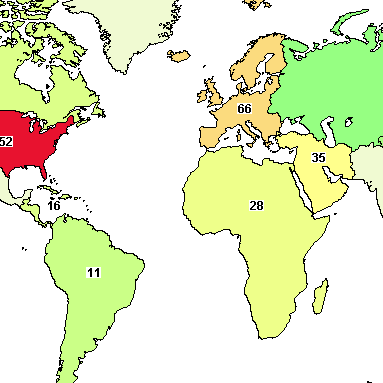
A searchable map offered by ClinicalTrials.gov
Sickle Cell Disease in Three Acts
The first act in the story of sickle cell disease, one of the oldest known genetic diseases, is not a happy one. Aside from a very small number of young patients undergoing successful bone marrow or stem cell transplants, there is no curative treatment. Other drugs address the disease according to which symptoms present most urgently, or serve as short-term solutions for a long-term problem.
Read more here.
Pfizer Announces Enrollment of First Patient in Phase 3 Trial in Sickle Cell Disease
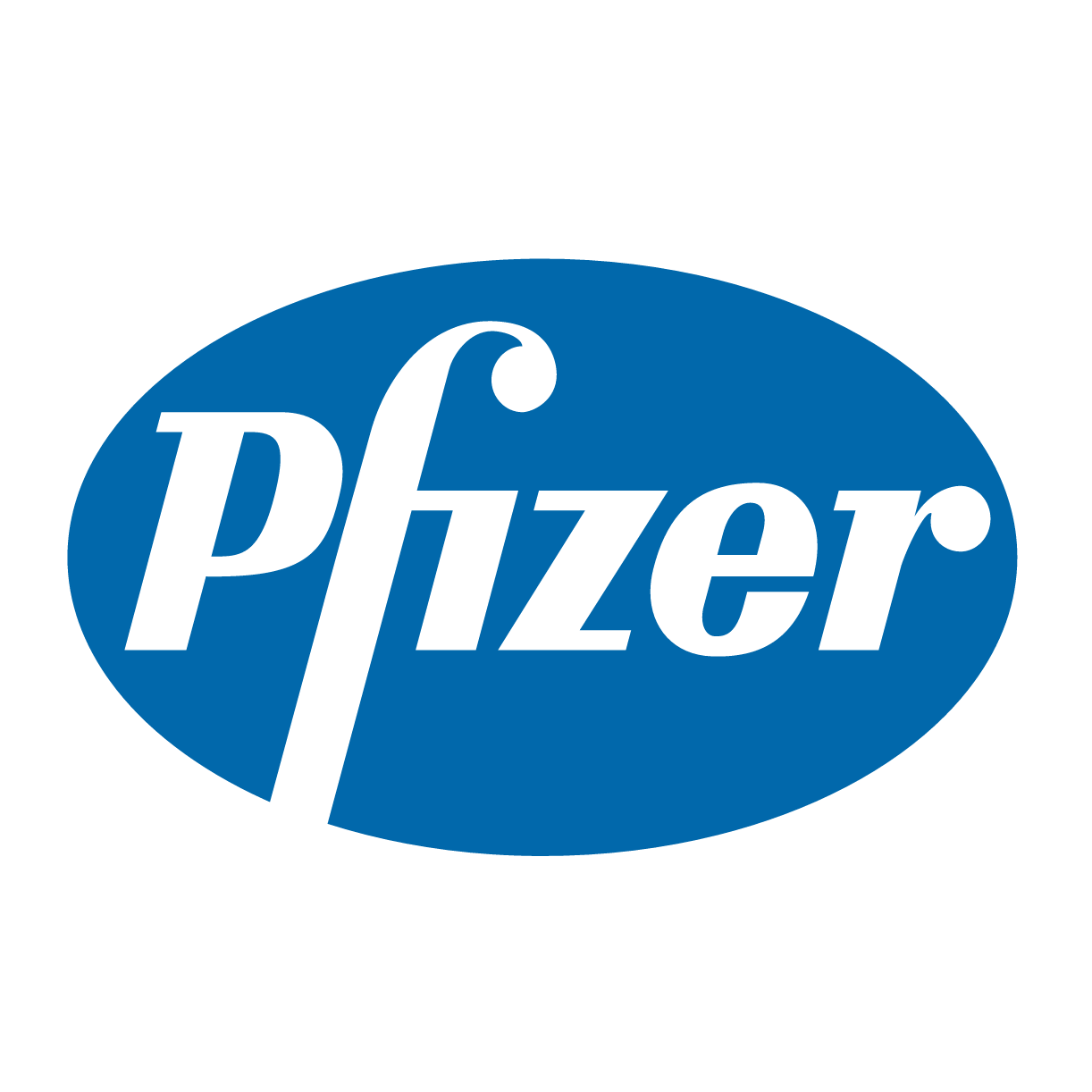
RESET Trial to Assess Effectiveness and Safety of Rivipansel (GMI-1070) in the Treatment of Vaso-Occlusive Crisis in Hospitalized Individuals with Sickle Cell Disease
Pfizer Inc. (NYSE:PFE) announced that the first patient has been enrolled in the RESET (Rivipansel: Evaluating Safety, Efficacy and Time to Discharge) study – a Phase 3 clinical trial assessing the efficacy and safety of rivipansel for the treatment of vaso-occlusive crisis in hospitalized individuals with sickle cell disease who are six years of age or older.
Read more here.
FDA Helps Tackle Sickle Cell Disease

Sickle cell disease (SCD) is the most common inherited blood disorder in the United States. It affects about 100,000 children and adults in the United States—and millions of people worldwide. New treatments are needed to prevent and treat its serious complications. That’s why the U.S. Food and Drug Administration is working with patients and stakeholders, including academics and those from the pharmaceutical industry, to help develop new treatments for SCD.
Read more here.
Drug Development: A Complicated Path

By Courtney Humphries
Nature 515, S4–S5 (13 November 2014)
Published online 12 November 2014
Only one drug is available to treat sickle-cell disease, but a wave of investment and industry attention is set to turn the tide.
Read more here.


